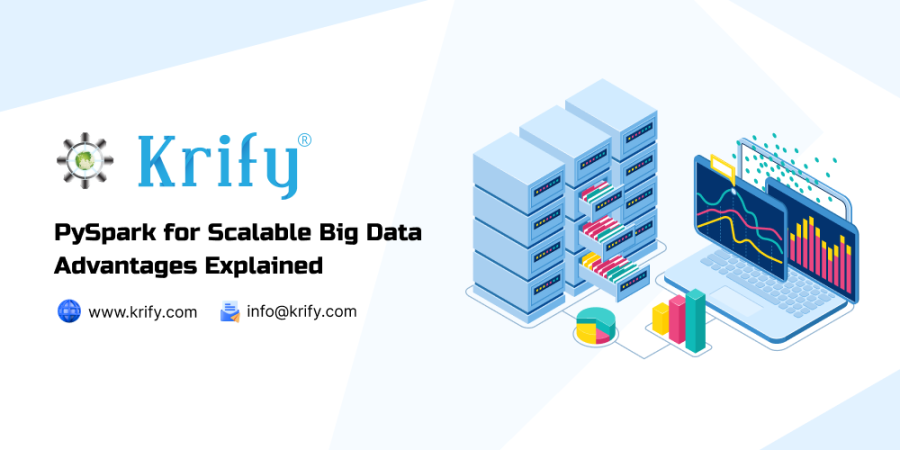PySpark for Scalable Big Data: Advantages Explained
In today’s data-driven world, businesses generate vast amounts of data every second. To leverage this data effectively, organizations need scalable analytics solutions. One of the leading technologies in this domain is PySpark. In this blog, we will explore the advantages of using PySpark for scalable big data analytics and why investing in our company can transform your data strategy.
Understanding PySpark: The Backbone of Big Data Analytics
PySpark is the Python API for Apache Spark, an open-source distributed computing system designed for big data processing. With PySpark, data scientists and analysts can harness the power of Spark while utilizing the simplicity and flexibility of Python. As organizations increasingly rely on big data for decision-making, PySpark emerges as a powerful tool for extracting insights from massive datasets.
Seamless Scalability
One of the primary advantages of PySpark is its ability to scale effortlessly. PySpark enables organizations to process large datasets by distributing data across a cluster of machines. This distribution allows for parallel processing, which significantly reduces the time required to execute complex queries and analyses. As your data grows, PySpark can seamlessly accommodate increased workloads without sacrificing performance.
Key Takeaway:
Scalability ensures that as your business expands and data volumes increase, remains efficient and effective, making it a reliable choice for long-term data strategies.
In-Memory Processing for Speed
Traditional data processing systems often rely on disk storage, which can slow down data retrieval and analysis. PySpark, however, leverages in-memory processing, allowing data to be stored in RAM rather than on disk. This approach drastically reduces latency, enabling organizations to perform complex computations in real-time.
Key Takeaway:
Faster processing means quicker insights. By using PySpark, businesses can make timely decisions based on the latest data, staying ahead of the competition.
Rich API and Ease of Use
PySpark provides a user-friendly API that is compatible with Python, making it accessible for data professionals familiar with Python libraries like Pandas and NumPy. This ease of use allows data scientists to quickly implement data transformations, manipulations, and analyses without extensive learning curves.
Key Takeaway:
The simplicity of PySpark empowers teams to become productive faster, reducing the time from data ingestion to actionable insights. This efficiency can lead to significant cost savings and a quicker return on investment.
Comprehensive Data Processing Capabilities
PySpark supports various data processing tasks, including batch processing, streaming data analysis, and machine learning. Its versatility means businesses can perform ETL (Extract, Transform, Load) operations, real-time data processing, and even build predictive models—all within the same framework.
Key Takeaway:
Having a single platform for multiple data processing needs simplifies workflows and reduces the need for integrating multiple tools, which can be complex and costly.
Robust Machine Learning Integration
With its MLlib library, PySpark provides built-in machine learning algorithms optimized for scalability. Businesses can leverage these algorithms to build, train, and deploy machine learning models on large datasets efficiently. This capability allows organizations to gain deeper insights and automate decision-making processes.
Key Takeaway:
Integrating machine learning with big data analytics enhances the ability to derive predictions and trends, providing a competitive edge in the market.
Strong Community Support and Ecosystem Integration
PySpark is backed by a large and active community of developers and data scientists. This strong community ensures continuous improvement, regular updates, and a wealth of resources for troubleshooting and learning. Additionally, PySpark integrates seamlessly with other big data tools like Hadoop, Hive, and Kafka, enabling organizations to build comprehensive data ecosystems.
Key Takeaway:
Access to community support and integration with existing tools reduces implementation time and enhances overall effectiveness, making it easier to adopt and scale big data solutions.
Cost-Effective Solution
Using PySpark can lead to significant cost savings in terms of infrastructure and operations. Because PySpark allows for efficient resource utilization through distributed computing, organizations can achieve more with less. Additionally, running PySpark on cloud platforms allows businesses to scale resources up or down based on demand, optimizing operational costs.
Key Takeaway:
Cost-effective solutions lead to higher returns on investment, making PySpark an attractive option for businesses looking to enhance their data analytics capabilities without breaking the bank.
Real-Time Data Processing for Immediate Insights
In today’s fast-paced business environment, real-time data processing is crucial. PySpark’s Structured Streaming enables organizations to process live data streams efficiently, allowing for immediate insights and rapid response to changing business conditions.
Key Takeaway:
Real-time analytics enable businesses to make proactive decisions, enhancing agility and responsiveness to market trends.
Conclusion:
As organizations continue to navigate the complexities of big data, PySpark stands out as a powerful, scalable solution for data analytics. Its advantages—seamless scalability, in-memory processing, user-friendly API, comprehensive capabilities, machine learning integration, strong community support, cost-effectiveness, and real-time processing—make it an ideal choice for businesses looking to harness the power of big data. Contact Us



